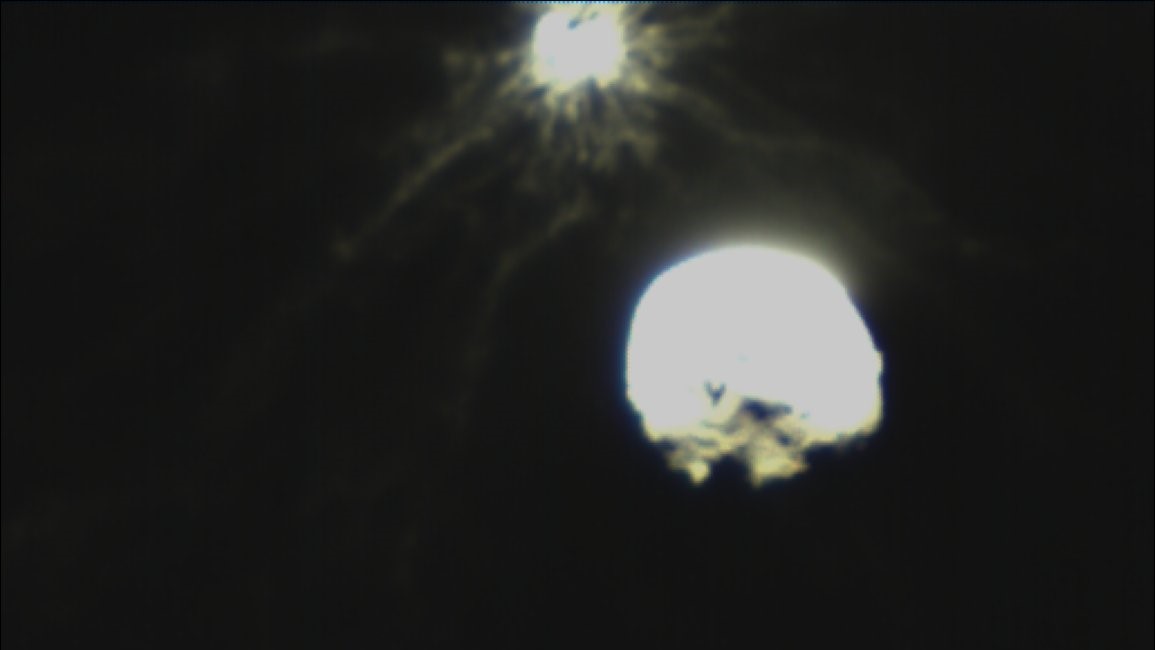DART truly made a mess last night.
On Tuesday (Sept. 27), the Italian space agency released its first images from the tiny Light Italian Cubesat for Imaging of Asteroids (LICIACube) spacecraft, which had reached Earth about three hours after NASA’s Double Asteroid Redirection Test (DART) spacecraft successfully impacted the asteroid Dimorphos about 7 million miles (11 million kilometers) away from Earth.
The images include a before-and-after comparison of the Didymos asteroid system, as well as photos of bright debris surrounding Dimorphos; both cameras aboard LICIACube are represented.
“We’re really very proud,” Elisabetta Dotto, science team lead at Istituto Nazionale di Astrofisica (INAF), said during a news conference held in Italian on Tuesday.
Related: Asteroid impact: Here’s the last thing NASA’s DART spacecraft saw before it crashed
These images are crucial to helping scientists understand the structure and composition of Dimorphos, Dotto explained. She said that while these photos are only the first couple to be released, the LICIACube images the team will be releasing over the coming days are also promising.
In the final image shared today, Dimorphos is surrounded by bright, hazy debris. “Dimorphos is completely covered really by this by this emission of dust and detritus produced by the impact,” Dotto said. Before impact, scientists weren’t sure how the asteroid would respond to the collision.
Conferenza stampa su @LiciaCube:Elisabetta Dotto, Science Team Lead di Istituto Nazionale di Astrofisica (INAF): “Una immagine pre impatto e una post impatto. Si vede il flash prodotto dall’impatto di Dart”Crediti FOTO ASI/NASASegui la diretta su ASITV: https://t.co/XTDIlfMNrh pic.twitter.com/1MjgWBLMo1September 27, 2022
NASA’s DART mission slammed into Dimorphos, a smaller space rock circling a larger asteroid called Didymos, to test a potential way of adjusting the orbit of an asteroid that threatens Earth, should scientists ever detect such an object. Now, astronomers are keeping a close eye on the Didymos system, ready to measure just how much Dimorphos’ orbit sped up.
That’s the data NASA needs to determine how successful DART was, but there’s no reason to stop the observations there. Mission personnel also recruited three spacecraft and countless ground-based observatories to watch the impact and its aftermath.
Then, of course, there’s LICIACube. The tiny spacecraft hitched a ride with DART, which deployed the cubesat on Sept. 11. LICIACube proceeded to test its two cameras on targets including Earth and the Pleiades star cluster.
The LICIACube Explorer Imaging for Asteroid (LEIA) camera can photograph with higher resolution but only captures images in black and white, whereas LICIACube Unit Key Explorer (LUKE) carries red-green-blue color filters and can observe a wider field of view.

On Monday, the tiny observer was ready to go, hanging back at a safe distance as DART sped in, then flying past the impact site about three minutes later, snapping photos all the way. LICIACube also imaged the far side of Dimorphos, opposite DART’s crash site.
Now, LICIACube is on its own as Italy’s first deep-space mission, cruising through deep space as it slowly beams its images back to Earth.
Email Meghan Bartels at [email protected] or follow her on Twitter @meghanbartels. Follow us on Twitter @Spacedotcom and on Facebook.

